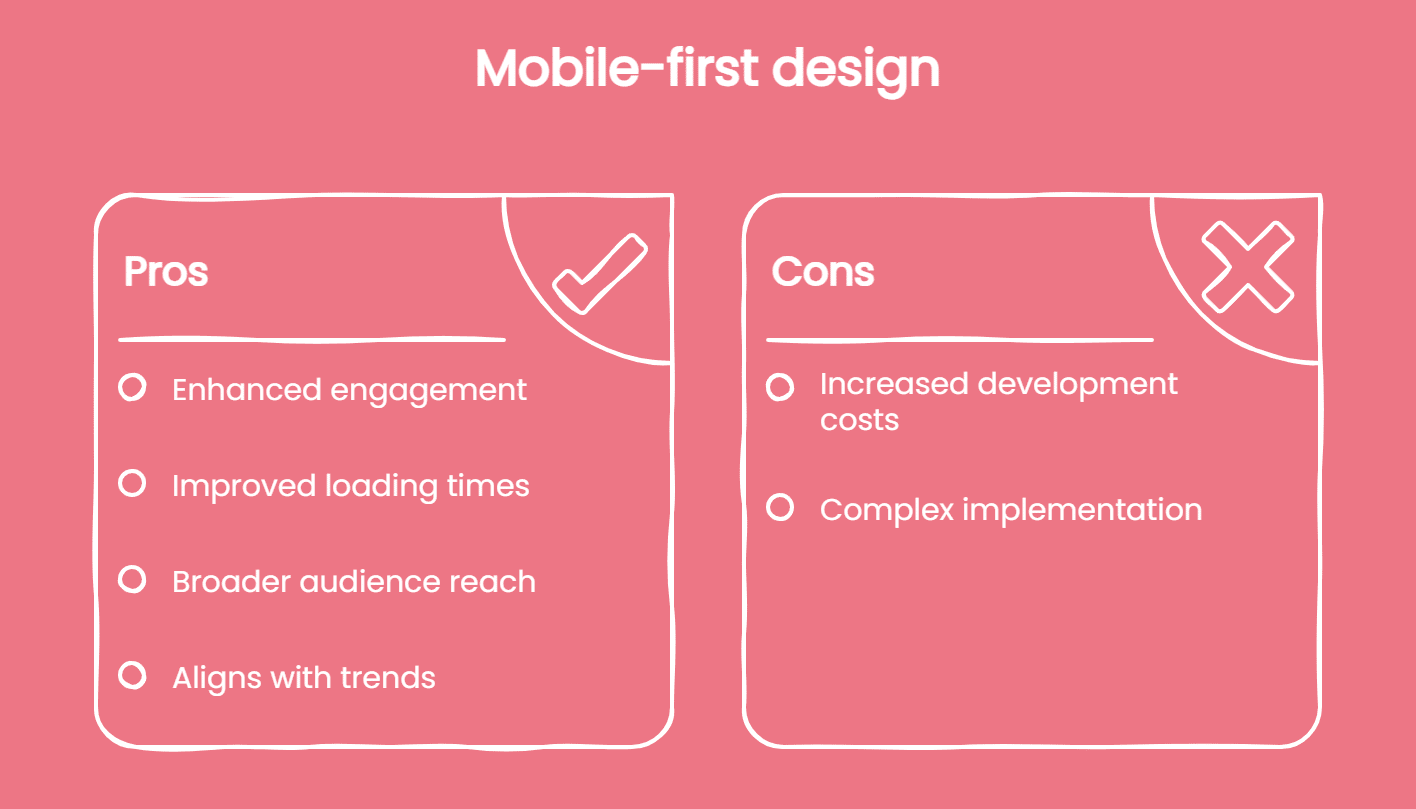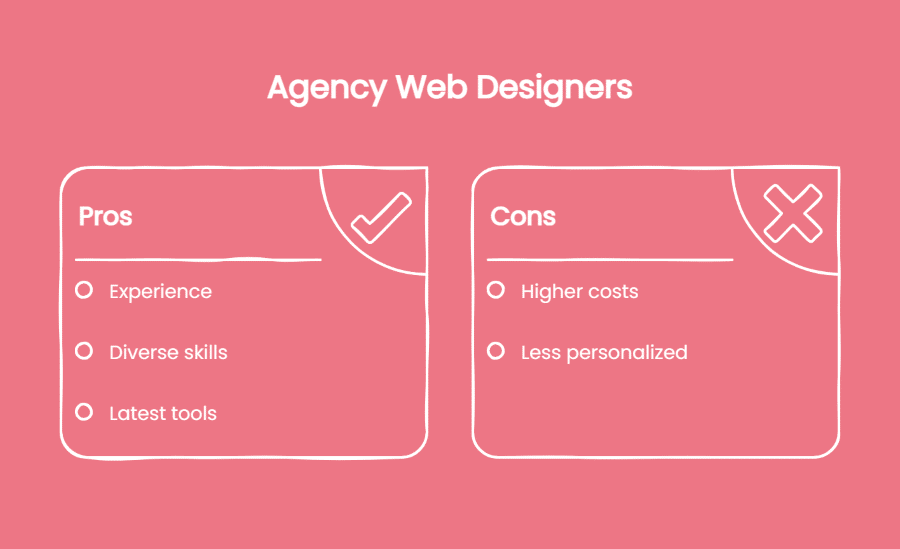TL;DR: A poorly planned website redesign can wipe out months of SEO progress. This guide outlines 10 essential steps for Australian small businesses—from audits and redirect maps to compliance checks and tracking setup. With proper preparation, you’ll preserve search rankings, maintain traffic, and set your redesigned site up for long-term success.
Preparing your content before a redesign is the difference between protecting hard-earned results and starting from scratch. Without a plan, small businesses risk losing visibility, leads, and credibility.
Australian small businesses in particular can’t afford that risk—81% rely on their website as a key source of lead generation. Research shows businesses can lose up to 40% of organic traffic after a poorly executed redesign, making preparation essential.
The good news: content preparation isn’t only about avoiding losses. It’s also your chance to improve performance, close content gaps, and strengthen your digital marketing foundation.
Why content preparation matters before your website redesign
Think of a redesign without content planning like renovating your shop without organising your stock—you may end up with valuable items misplaced, damaged, or lost.
Proper preparation means:
- Preserving SEO authority through smart redirects.
- Identifying and updating your most valuable assets.
- Ensuring compliance with Australian standards.
- Creating opportunities to grow your audience and conversions.
Most small business website redesigns take 8–12 weeks from planning to launch, with 2–3 weeks of content preparation upfront. Skipping this phase to save time often costs far more later in lost rankings, fixes, and missed opportunities.
1. Conduct a comprehensive content audit
A content audit is the stocktake of your digital assets. Just as you wouldn’t renovate without knowing what inventory you have, documenting your existing content creates the roadmap for a smooth migration.
Start by using tools like Screaming Frog or Google Analytics to capture every page on your site. Create a spreadsheet that includes:
- Page URLs and titles
- Traffic metrics (last 12 months)
- Conversion data
- Content type (blog, product, service)
- Last update date
According to the Content Marketing Institute, 65% of businesses discover redundant or outdated content during audits that actively harms SEO.
What content should you keep?
Preserve pages that drive traffic, generate leads, or rank for important keywords. Priority goes to:
- High-traffic pages (top 20% of your content)
- Pages with quality backlinks
- Content ranking on page one for target keywords
- Conversion-optimised landing pages
- Evergreen guides and resources
HubSpot research shows that keeping top-performing content in place maintains up to 93% of organic traffic after a redesign.
2. Identify and prioritise high-value content
Not all content deserves to make the cut. A website redesign is the perfect chance to separate your best-performing assets from outdated or low-value material.
High-value content includes:
- Cornerstone articles and evergreen guides
- Service and product pages that drive conversions
- Case studies or resources that demonstrate authority
Use data to decide what’s worth prioritising. Look for:
- Pages generating over 100 monthly visits
- Content with engagement rates above 60%
- Pages that regularly contribute to conversions
- Resources frequently shared or linked to by others
Small businesses with focused, high-quality content see up to 2.8 times better engagement than those weighed down by bloated websites.
Instead of deleting outdated or underperforming content, place it on a “sunset list” and archive it. This way, you can preserve it for historical reference or future updates without letting it clutter your new site.
3. Plan your new URL structure and create a redirect map
Your URL structure is the backbone of your site’s navigation. If you change it without a plan, both visitors and search engines can get lost.
The solution is a clear redirect map prepared before any code changes. Start by:
- Exporting all current URLs
- Mapping each one to its new location
- Noting pages being consolidated or removed
- Documenting 301 redirects for every change
- Avoiding redirect chains—don’t send visitors or Google through multiple jumps before they reach the right page
Done correctly, this process preserves up to 95% of your existing rankings. Missed redirects, however, can cause permanent losses.
Will you lose SEO rankings during a redesign?
You may see temporary fluctuations, but with proper redirects most businesses recover within 2–3 months.
How do you avoid losing traffic?
- Create a complete 301 redirect map
- Keep existing URL structures where possible
- Submit updated sitemaps immediately after launch
- Monitor 404 errors daily in the first weeks
- Keep original publication dates intact to maintain authority signals
4. Preserve and optimise your metadata
Metadata, including your title tags and meta descriptions, is the shop window of your website in search results. They directly influence whether people click through to your site, so preserving and improving them is essential during a redesign.
Export and review all existing metadata before making changes. Pay close attention to:
- Title tags (keep under 60 characters)
- Meta descriptions (maximum 155 characters)
- Header tags (clear H1, H2, H3 structure)
- Alt text for images
- Schema markup for rich results
Well-optimised metadata can increase click-through rates by nearly 6%, which can make a big difference in competitive local markets. Update your tags to reflect current services and offerings, but retain important keywords. For local SEO, include place names such as your suburb, city, or region.
5. Backup all existing content and assets
Before any redesign work begins, create a full backup of your website and digital assets. This ensures nothing is lost during the migration process.
Backups should include more than just text content. Make copies of:
- Images and graphics
- Videos and animations
- PDFs and downloadable resources
- Customer testimonials
- Form submission data
- Email templates
Follow the 3-2-1 backup rule: keep three copies, on two different media types, with one stored offsite. Cloud storage services such as Google Drive or Dropbox are convenient, but also keep a physical copy for added protection.
Many Australian hosting providers offer automatic backups, but these aren’t always reliable or comprehensive. Creating your own backups ensures you maintain full control of your data.
What happens to old website content during a redesign?
During migration, your old content is replaced by the new site. With proper backups, however, no data is ever permanently lost.
6. Audit and update your content for mobile users

With over 90% of Australians accessing the internet via mobile devices, your website’s mobile experience directly affects both rankings and customer behaviour. Google now uses mobile-first indexing, which means your mobile site performance is the benchmark for search visibility.
Review your content with mobile users in mind:
- Keep paragraphs short (two to three sentences) for easier reading
- Ensure buttons are large enough to tap comfortably (minimum 44×44 pixels)
- Use legible font sizes (16px or larger for body text)
- Compress images to reduce load times
- Use responsive video players and lightweight formats
Always test your site on real devices. Different screen sizes can reveal usability issues that don’t appear in browser previews.
Why is mobile-friendly design important for small businesses?
A poor mobile experience directly impacts sales. More than 60% of users won’t return to a mobile site they struggled with, and nearly half will head to a competitor instead. For local businesses, mobile optimisation also influences Google Business Profile visibility, local rankings, click-to-call actions, and map navigation.
7. Review and refresh outdated content
A website redesign is the ideal time to update information that no longer reflects your business. Outdated content not only weakens your credibility but can also harm SEO performance.
Make sure key details are current, including:
- Pricing and service information
- Product ranges or offerings
- Staff bios and team photos
- Industry statistics or research references
- Compliance and legal details
- Contact information and locations
Refreshing content has been shown to generate significantly more traffic than creating entirely new pages. For Australian businesses, it also ensures compliance with regulations such as privacy policies (APP), GST information, and any industry-specific standards.
8. Plan for content that needs creation
A redesign often reveals missing pieces in your content. Planning for these gaps early prevents delays later in development and ensures your new site launches complete.
Common areas small businesses need to create content for include:
- Location-specific service pages
- FAQ sections that address customer concerns
- Case studies featuring local clients
- An updated About page with ABN and credentials
- Integration guides for Australian payment systems such as BPAY or PayID
Set aside both time and budget for this work. Professional content creation during a redesign typically ranges between $3,000 and $5,000, depending on scope.
Create a simple production schedule to stay on track:
- List the new pages or resources required
- Assign responsibility for drafting each one
- Set clear deadlines ahead of development
- Review drafts for brand consistency
- Optimise the content for search before migration
9. Coordinate with your website design team
Successful redesigns depend on clear communication between your business and your design team. Misunderstandings about content requirements are one of the most common causes of delays, so put systems in place early.
Document how content will be delivered and approved, including:
- File formats and naming conventions
- Review and sign-off processes
- Version control methods
- Contingency plans for launch
For most small businesses, working with a professional design partner is the best option. Experienced designers understand web analytics, user experience, and technical SEO—areas where DIY efforts often fall short. When evaluating options, it’s worth considering ai vs traditional web design approaches to determine which method best suits your project scope and budget.
When choosing a partner, look for a team that:
- Understands Australian market conditions and compliance requirements
- Has experience with local payment gateways
- Offers post-launch support
- Includes redirect implementation as part of their process
- Provides clarity on the web designer vs developer roles to ensure your project has the right expertise for both visual design and technical development
10. Set up tracking and measurement before launch
You can’t improve what you don’t measure. Setting up tracking before your new site goes live creates a benchmark for success and helps you quickly identify issues after launch.
At a minimum, install and configure:
- Google Analytics 4
- Google Search Console
- Heatmap and session recording tools such as Microsoft Clarity or Hotjar
- Goal and conversion tracking
- 404 error monitoring
Also pay attention to Google’s Core Web Vitals, which affect search rankings:
- Page load speed (under 2.5 seconds for the largest element)
- Interactivity (first response within 100 milliseconds)
- Visual stability (no unexpected layout shifts)
How do you measure success after a website redesign?
Check your performance against both traffic and engagement metrics for at least 90 days post-launch. Key indicators include:
- Retaining at least 85% of your organic traffic
- Increases in conversion rates
- Faster page load times
- Stronger mobile usability scores
- Longer average session duration and reduced bounce rates
Creating a simple dashboard to monitor these metrics daily in the first month will help you respond quickly to any problems and prove the return on your redesign investment.
Choosing the right website redesign partner in Australia

Not all web designers understand content migration complexities.
Australian businesses need partners who grasp local requirements—from ACL compliance to integration with Australian services like Australia Post APIs or CommBank payment gateways.
How much does a website redesign cost in Australia?
Costs vary depending on complexity and features, but most small business projects fall in these ranges:
- Basic 5-page website: $3,000-8,000 AUD
- Small business site (10-20 pages): $8,000-15,000 AUD
- E-commerce redesign: $15,000-50,000 AUD
- Enterprise solutions: $50,000+ AUD
On average, small business redesigns sit around $12,000, which usually includes design, development, and basic SEO.
What should I look for in a website design company?
Prioritise teams that:
- Provide Australian-based support and align with your time zone
- Have a track record with local businesses in your industry
- Hold an ABN and professional indemnity insurance
- Offer post-launch support packages
- Understand Australian compliance requirements and payment systems
- Include SEO and redirect implementation in their process
Ask to see case studies that demonstrate traffic and lead retention after a redesign. A reliable agency will be able to show measurable results.
Post-redesign content maintenance
A website redesign doesn’t end at launch. The first weeks and months are critical for protecting your investment and fine-tuning performance.
Immediate post-launch checks:
- Submit your new sitemap to Google
- Confirm all redirects are working
- Monitor 404 errors closely
- Test forms, calls to action, and interactive features
- Verify analytics and tracking setup
- Review the mobile experience on multiple devices
Plan for the first 90 days:
- Address any content gaps identified during the redesign
- Optimise areas where performance lags
- Gather and act on user feedback
- Test variations of key pages and calls to action
- Continue refining SEO across the site
Websites that receive active monitoring and optimisation after a redesign typically perform far better than those left static. Treat this period as part of the project, not an afterthought.
Conclusion
A website redesign can either protect or destroy the progress you’ve made online. Understanding what web design is and its impact on your business outcomes is essential. The difference comes down to preparation.
By auditing your content, planning redirects, and updating what matters most, you reduce risk and set your new site up for stronger results. Most small businesses benefit from a major redesign every two to three years, with smaller updates annually to stay competitive.
Start with a content audit today—because the success of your next website depends on the work you do before the first design draft is created.





